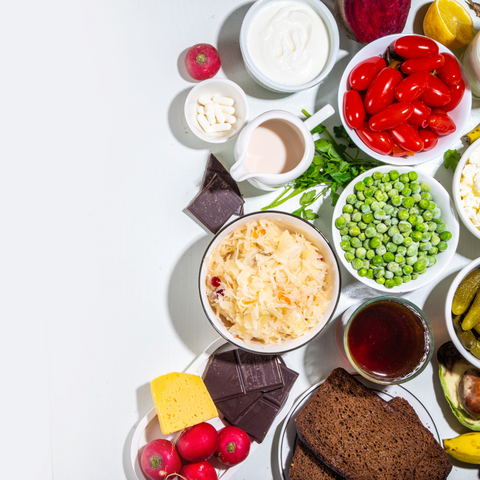How a microbiome-friendly diet can help beat stubborn acne

Are you struggling with acne that doesn't seem to respond to traditional treatments? If so, you may want to take a closer look at your microbiome.
See, many standard over-the-counter (OTC) treatments for acne – like benzoyl peroxide topical creams, for example – only treat the symptoms of acne. They don't address the cause. That's because those treatments were created back in the 1960s, before the moon landing! Since then, technology has come a long way, and with it, our knowledge about acne and its causes.
Most old OTC treatments dry out zits or use antibiotics to simply kill all the bacteria on your skin. While that might help heal pimples on the skin’s surface, it doesn't help prevent future zits.
So if OTC treatments don't work for you, there's a good reason. And even better, there's hope.
Here's how fixing your microbiome can help stop stubborn acne
How it works: A little bit of science
We now know that, while there are a variety of factors that cause acne, a lot of it comes down to bacterial imbalances. That may sound like marketing jargon, but it's not! We'll explain.
Essentially, your body has several ecosystems of bacteria called microbiomes. (What is a microbiome? Learn more here.) When everything is working, you have a wide diversity of microorganisms in these microbiomes. Bacteria that naturally occur on your skin and in your gut co-exist in relative peace, with no one getting too big for their bacterial britches.
But, when certain bacteria over grow, they can start causing trouble. That means inflammation, infection, and, yes, acne. This overgrowth can be caused by a lot of things – diet, medications, even just dry skin.
The key to reducing and preventing breakouts is to go beyond treating surface zits by:
- helping your microbiomes get back in balance and
- addressing any underlying causes putting your microbiomes out of whack
Here's how you do it
First, you need to get your microbiome in balance. For this, you’ll want to consider primarily prebiotics and probiotics. Prebiotics are things that feed your good bacteria to help them multiply and get stronger. This helps your good bacteria start taking down any bad bacteria overgrowth that’s causing issues in your system. Probiotics, on the other hand, are foods and supplements that actually contain good bacteria, like sending in reinforcements.
To balance out your microbiome, a mix of both is the best course of action, especially if you’ve taken antibiotics and might be missing sufficient good bacteria populations for the prebiotics to feed. Consider a combination of: eating pre- and probiotic foods, taking a skin-friendly probiotic supplement, and using probiotic topical products.
And it’s clinically proven to work
Dermala was founded by microbiologists. Our probiotic products are carefully formulated to make sure they actually help people with acne. And to prove it, we even have the results of an 8-week clinical study performed by an independent clinical research organization.
The study, which pitted a standard OTC salicylic acne pad against our probiotic SCANTILY Pad, found Dermala products to be more effective across all metrics.
Participants using Dermala saw bigger improvements in:
- Number of zits
- Size of zits
- Severity of zits
- Overall skin inflammation
- Skin appearance and feel
Compared to participants using regular over-the-counter acne treatments. And Dermala studied changes in the participants’ microbiomes and similarly found that those using the Dermala pads also experienced an increase in overall diversity of the skin microbiome and in good bacteria populations and a decrease in acne-causing bacteria like C. acnes.
That’s how you can stop stubborn acne with probiotics
If you’ve tried everything else, try probiotics to help start healing your skin. Because they work. But don’t just take our work for it – check out our reviews.
Ready to start your skincare journey? Check out our products or take the skin quiz.

Leave a comment